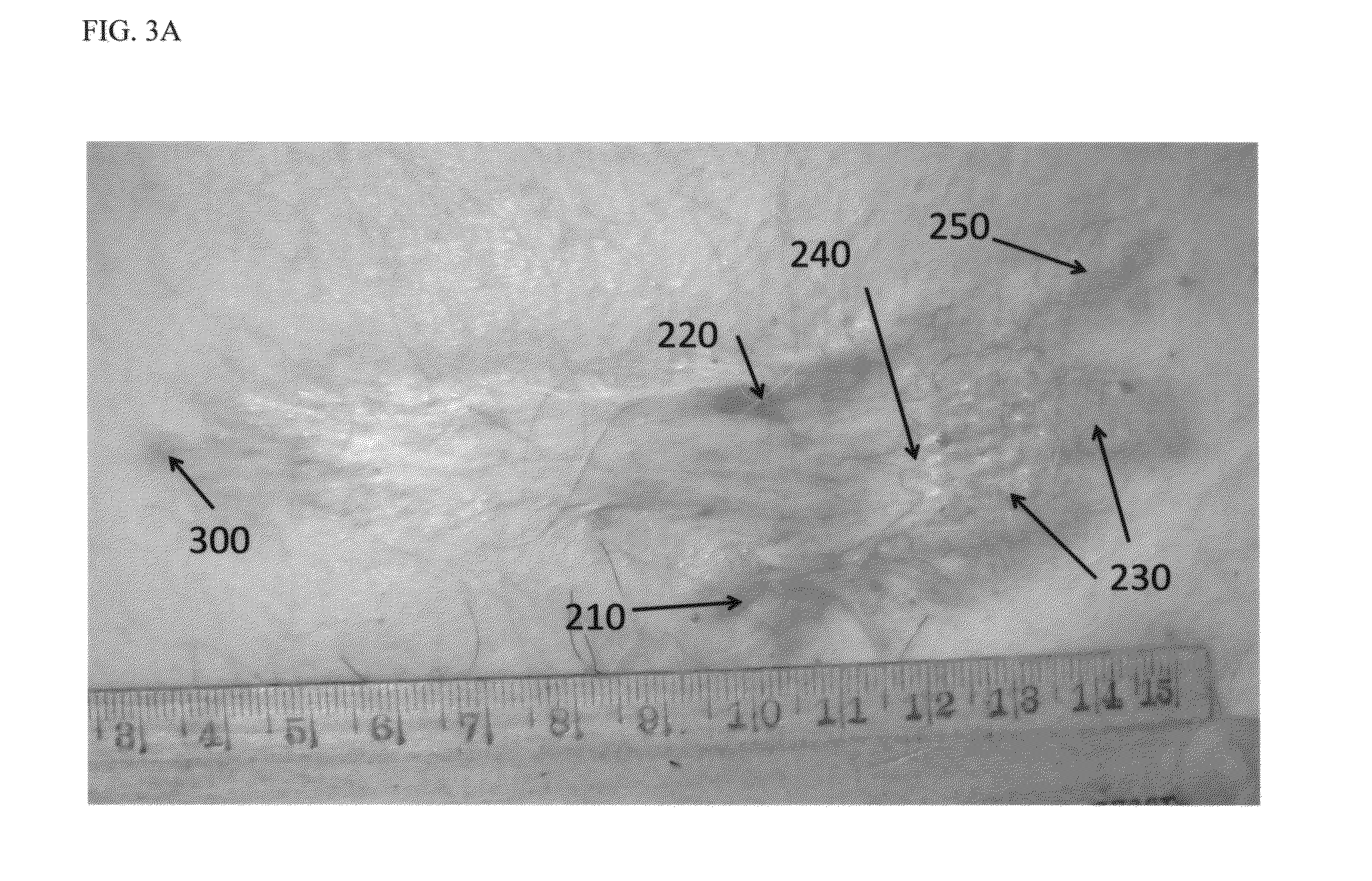Managing and Treating Keloids
a technology for managing and treating keloids, applied in the direction of biocide, plant/algae/fungi/lichens, drug compositions, etc., can solve the problems of cosmetic unsightly keloids, difficult therapeutic intervention and management of keloids, excessive itching, irritation and pain, etc., to reduce the thickness and size, reduce the thickness and the effect of thickness
- Summary
- Abstract
- Description
- Claims
- Application Information
AI Technical Summary
Benefits of technology
Problems solved by technology
Method used
Image
Examples
example 1
[0028]The following disclosure is drawn to methods of treating or managing a keloid or scar or other hypertrophic skin growth. FIG. 1 is an illustrative example of a large keloid on a patient's chest. This keloid has been in existence for at least 30 years. It started as a small scar left after a superficial wound had healed. The original scar on this patient was around the area denoted as 10. The scar grew over an approximate time period of 30 years into its current shape and form shown in FIG. 1. For the first 10-15 years the growth of the keloid was steady increased towards the area designated 30. Thus the region between 10 and 30 is considered the oldest and the most toughly fibrous region of the keloid. After about 15 years of slow and steady growth between the denoted 10-30 area, the keloid growth began to spread albeit slowly towards region designated 20 in FIG. 1. Currently, as of 2012, there has been no growth past the area 20. However, over the past 10 years or so, there h...
example 2
[0035]In an embodiment, FIG. 6 is an illustrative example of a second, albeit smaller, keloid growth 610 in a vicinity of a major keloid 600 that was disclosed vide supra (FIGS. 1-5). The smaller keloid is located just below the neck on a human chest area. The smaller keloid 610 appeared about 15 years after the major keloid 600. Those skilled in the art recognize that smaller and less pronounced keloid growth may occur in the vicinity of major / large keloids. FIG. 6 also discloses raised areas 620 with the smaller keloid 610. These raised areas are characterized by ridges 620, and striations 630, as illustrated in a close-up view in FIG. 7. Areas 620 and 630 that were particularly itchy and painful while rubbing against clothing, for instance. In addition, as illustrated in an embodiment in FIG. 8, the smaller keloid showed reddish areas numbered 720, 730, 740 and 750. These reddish areas are typically irritated and itchy. In an embodiment, this keloid was treated as disclosed above...
PUM
| Property | Measurement | Unit |
|---|---|---|
| time | aaaaa | aaaaa |
| size | aaaaa | aaaaa |
| size | aaaaa | aaaaa |
Abstract
Description
Claims
Application Information
 Login to View More
Login to View More - R&D
- Intellectual Property
- Life Sciences
- Materials
- Tech Scout
- Unparalleled Data Quality
- Higher Quality Content
- 60% Fewer Hallucinations
Browse by: Latest US Patents, China's latest patents, Technical Efficacy Thesaurus, Application Domain, Technology Topic, Popular Technical Reports.
© 2025 PatSnap. All rights reserved.Legal|Privacy policy|Modern Slavery Act Transparency Statement|Sitemap|About US| Contact US: help@patsnap.com



